The Painted Monasteries of Bucovina are one of the loveliest and most interesting attractions in Romania. Begun by Stephen the Great, the monasteries' exterior walls were originally painted with colorful bible story depictions for the education of illiterate peasants. Remarkably, after 500 years, these frescoes are still vibrant and beautiful. Among the most notable monasteries are Voronet, built in 1488 and called the Sistine Chapel of the East; Sucevita, with its unique "Ladder of Virtue"; Humor, featuring the devil amusingly depicted as a woman, Moldovita, where a monumental scene of the Siege of Constantinople is displayed, and Arbore. The remains of Stephen the Great rest in Putna, which also houses a museum with real medieval art treasures, like carpets, icons, miniatures and jewels. The city of Suceava is the base point for your tour of Bucovina.
In Transylvania, the Ramet monastery sits in the valley of the Geoagiu river in the Trascau mountains, near Teius. Built in the 14th century, it to the estates of both Hungarian King Mathias Corvinus and Radu the Great, the ruling prince of Wallachia. It is currently a nunnery, deep in the earth 1.6 meters beneath its altar is a fresh water spring suitable for drinking.
Sambata de Sus was founded by the Wallachian princely family, the Brancovans in the 17th century. It lies in the valley of the Sambata river at the foot of the Fagaras mountains. It was rebuilt in 1926 and in 1954 a school for painting on glass was established. It is currently run by monks.
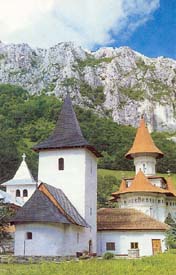
|
|
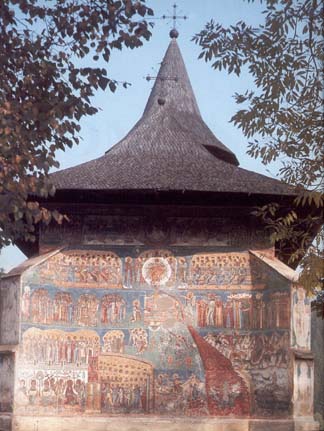
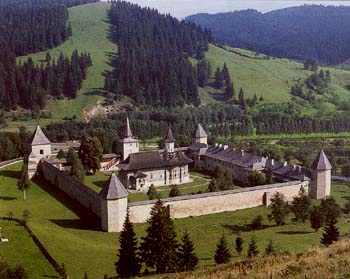
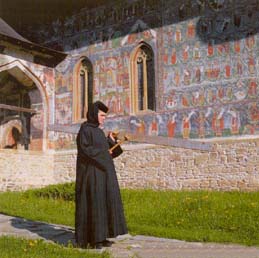
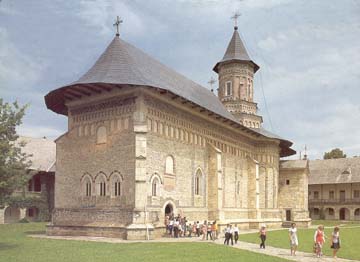
|





